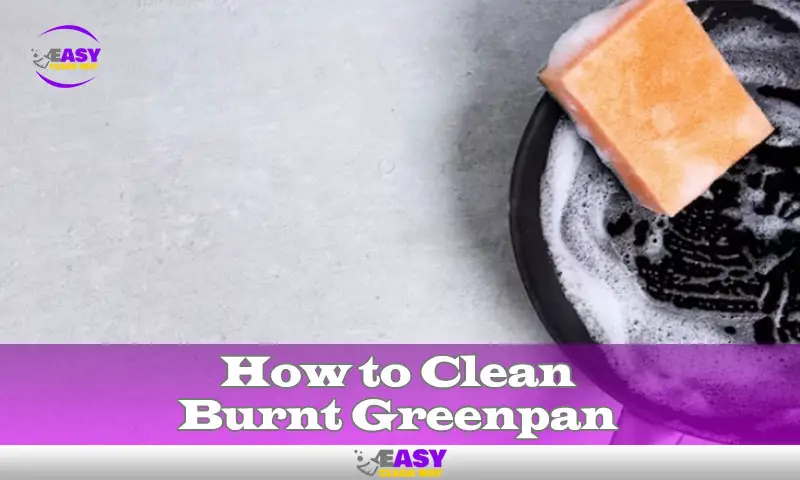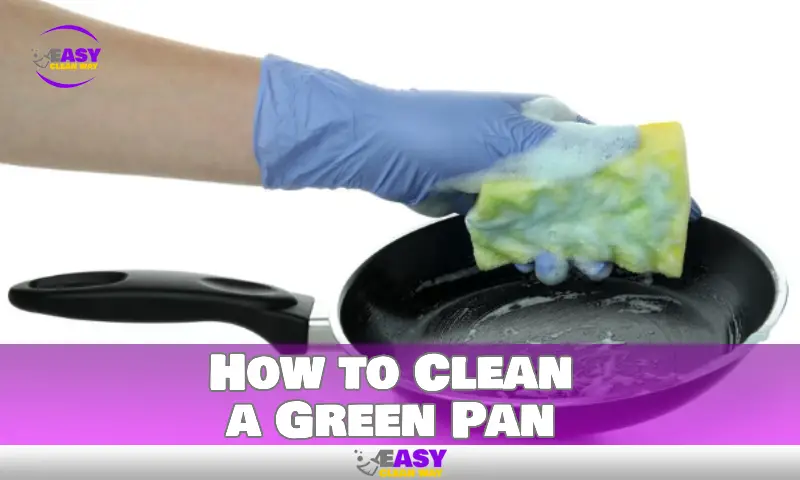To clean faucet corrosion, mix equal parts white vinegar and water and soak a cloth in the solution. Use the cloth to scrub the corroded areas, then rinse with warm water.
Faucets are essential fixtures in our homes, providing us with access to clean water for various purposes. However, over time, they can develop corrosion, which not only affects their appearance but can also lead to issues with functionality. Corrosion can occur for a variety of reasons, including mineral deposits, hard water, and exposure to moisture.
Thankfully, with a few simple steps and basic household materials, you can effectively clean faucet corrosion and restore your faucet’s shine. In this article, we will discuss an easy and effective method to clean faucet corrosion, allowing you to extend the lifespan of your fixtures and improve the overall aesthetic of your kitchen or bathroom.
Understanding Faucet Corrosion
Faucet corrosion is a common problem that can affect the performance and appearance of your faucets. Understanding the causes, types, signs, and impact of corrosion is crucial to effectively addressing this issue. Let’s delve into these aspects to gain a deeper understanding.
Common Causes Of Faucet Corrosion
Numerous factors can cause faucet corrosion. Here are the common causes to be aware of:
- Hard water: High mineral content in water can lead to corrosion over time.
- Chemical exposure: Certain cleaning agents or harsh chemicals can initiate corrosion on faucet surfaces.
- Moisture and humidity: Constant exposure to moisture and high humidity levels can accelerate the corrosion process.
- Lack of maintenance: Neglecting regular cleaning and maintenance can allow corrosion to develop and worsen.
Different Types Of Corrosion
Not all corrosion is the same. Different types of corrosion can occur on your faucets. Let’s explore these types:
- General corrosion: This type of corrosion leads to an overall degradation of the faucet surface, resulting in a rough and dull appearance.
- Pitting corrosion: Pits or small holes form on the faucet surface due to localized corrosion, often caused by aggressive chemical agents or abrasive particles.
- Galvanic corrosion: When dissimilar metals come into contact with each other, galvanic corrosion can occur, leading to damage to the faucet finishes.
- Crevice corrosion: Moisture and debris trapped in crevices or joints of the faucet can cause this type of corrosion, resulting in localized damage.
Signs And Symptoms Of Corrosion
Detecting corrosion in its early stages is important to prevent further damage. Look out for these signs and symptoms:
- Discoloration: The appearance of white, green, or brownish spots or stains on the faucet surface indicates corrosion.
- Flaking or peeling: If the faucet finish starts to peel off or flake, it could be a sign of corrosion beneath the surface.
- Rough texture: Corrosion can make the faucet feel rough or pitted to the touch.
- Leaks and drips: Corrosion can compromise the integrity of the faucet, leading to leaks or persistent drips.
The Impact Of Corrosion On Faucet Performance
Corrosion can significantly affect the performance of your faucet. Consider the following impacts:
- Reduced water flow: The buildup of corrosion can restrict the flow of water through the faucet, resulting in lower water pressure.
- Plumbing system damage: If left untreated, corrosion can spread to the plumbing system, causing more extensive damage that may require costly repairs.
- Impaired functionality: Corroded faucets may become difficult to operate with stiff handles or valves that are hard to turn.
- Aesthetic deterioration: The presence of corrosion can diminish the visual appeal of your faucets, making your bathroom or kitchen appear dated and neglected.
Understanding the causes, types, signs, and impact of faucet corrosion empowers you to take effective measures to clean and prevent this problem. Now that we have a clear understanding of faucet corrosion, let’s move on to the next section on how to clean it effectively.
Preparing For Restoration

Gathering The Necessary Tools And Materials
To effectively remove faucet corrosion and restore its shiny appearance, it’s essential to gather the necessary tools and materials. Here are the key points:
- Plastic gloves: Protect your hands from any chemicals or harmful substances during the cleaning process.
- Safety goggles: Shield your eyes from splatters or debris while handling cleaning products.
- Wrench or pliers: Use these tools to carefully detach the faucet aerator or other removable parts for a thorough cleaning.
- A soft toothbrush or old toothbrush: Ideal for scrubbing away corrosion and grime from hard-to-reach areas.
- White vinegar: This natural cleaning agent helps dissolve mineral deposits and rust on the faucet’s surface.
- Baking soda: Combine with vinegar to create a gentle abrasive paste for scrubbing tougher stains and corrosion.
- Microfiber cloth or soft sponge: Use these gentle materials to wipe down the faucet and dry it without leaving any scratches.
- Lime or rust remover (if needed): In cases where the corrosion is severe, a specialized cleaner might be necessary to dissolve tough stains and build-up.
Ensuring Safety Precautions
Before starting the restoration process, it’s important to take certain safety precautions. Here’s what you need to keep in mind:
- Turn off the water supply: Before attempting any faucet cleaning, shut off the water supply to avoid accidents or water damage.
- Ventilation: Ensure that the area where you’ll be cleaning the faucet is well-ventilated to prevent the inhalation of fumes from cleaning products.
- Read product labels: Familiarize yourself with the instructions and recommendations provided on the cleaning product labels for safe and effective use.
- Protect surrounding surfaces: Use towels or plastic sheets to cover the sink and surrounding areas to prevent accidental spills or damage.
Cleaning The Affected Area
Now that you’ve gathered your tools and taken the necessary precautions, it’s time to clean the affected area. Here’s how to do it:
- Remove the faucet aerator: Use a wrench or pliers to carefully detach the aerator from the spout. This will allow for better access to the corroded areas.
- Soak in vinegar: Fill a small container with white vinegar and submerge the detached aerator, ensuring the corroded parts are fully covered. Let it soak for at least an hour to loosen the corrosion.
- Scrub away corrosion: After soaking, use a soft toothbrush or old toothbrush to gently scrub away the loosened corrosion and mineral deposits. For tougher stains, create a paste by mixing baking soda with vinegar and using it as an abrasive cleaner.
- Rinse and dry: Thoroughly rinse the aerator under running water to remove any residue. Then, dry it with a soft cloth or sponge to prevent water spots or further corrosion.
Identifying And Addressing Underlying Issues
Cleaning up faucet corrosion is just the first step. To prevent future corrosion and maintain the faucet’s longevity, it’s crucial to identify and address any underlying issues. Consider the following:
- Hard water: If your area has hard water, it can contribute to corrosion. Invest in a water softener or use filtered water to reduce mineral deposits.
- Leaky pipes: Leaks can accelerate corrosion. Inspect your plumbing system for any leaks and promptly repair them to prevent further damage.
- Sealant deterioration: Check if the sealant around the faucet is deteriorating. If so, reapply a waterproof sealant to prevent moisture from causing corrosion.
- Regular maintenance: Adopt a regular cleaning and maintenance routine for your faucet to keep it in optimal condition. Wipe it down regularly, remove mineral deposits, and address any signs of corrosion promptly.
By following these steps and addressing any underlying issues, you can effectively remove faucet corrosion and restore its original shine. Remember to always prioritize safety and maintenance to extend the lifespan of your faucet.
Restoring Faucet Shine
When it comes to faucet maintenance, one of the key aspects is restoring its shine. Corrosion can make your faucet look dull and worn out, but with the right cleaning techniques, you can bring back its sparkle. In this section, we will explore how to restore faucet shine effectively.
Selecting The Appropriate Cleaning Products
To clean and restore the shine to your faucet, it’s important to use the right cleaning products. Here are some key points to keep in mind when selecting your cleaning products:
- Look for non-abrasive cleaners specifically designed for faucet surfaces.
- Use mild dish soap or vinegar solution for basic cleaning.
- For stubborn corrosion, you can resort to commercial cleaning products that are specifically formulated to remove hard water stains and mineral deposits.
- Avoid harsh chemicals or abrasive scrubbers, as they can damage the finish of your faucet.
Step-By-Step Process Of Cleaning And Removing Corrosion
Now that you have the right cleaning products, let’s dive into the step-by-step process of cleaning and removing corrosion from your faucet:
- Start by preparing a solution of warm water and mild dish soap or vinegar.
- Wet a soft cloth or sponge with the cleaning solution and gently scrub the faucet surface. Pay extra attention to areas with visible signs of corrosion.
- Rinse the faucet thoroughly with clean water to remove any residue.
- For tougher stains or corrosion, dampen a cloth with a commercial cleaning product and apply it to the affected areas. Follow the product instructions for the best results.
- Use a soft-bristled brush or an old toothbrush to reach into difficult-to-clean nooks and crannies.
- Rinse the faucet again and wipe it dry with a clean, soft cloth to prevent water spots.
Special Care For Different Faucet Materials
Different faucet materials require specific care to maintain their shine and prevent damage. Here are a few pointers based on common faucet materials:
- Stainless steel: Avoid using abrasive cleaners or scrubbers that can scratch the surface. Instead, opt for mild dish soap or vinegar solutions.
- Brass: Use a gentle brass cleaner or a mixture of salt and lemon juice to remove the tarnish. Polish with a soft cloth to restore shine.
- Chrome: Clean with mild dish soap or vinegar solutions, and avoid abrasive cleaners that can scratch the chrome finish.
Remember to check the manufacturer’s instructions for specific care recommendations depending on your faucet material.
Conducting Thorough Inspections For Hidden Corrosion
In addition to visible corrosion, it’s important to conduct regular inspections to identify any hidden corrosion. Follow these steps to ensure a thorough inspection:
- Examine the base of the faucet, especially where it meets the sink or countertop, for any signs of water damage or corrosion.
- Check under the sink for leaks or moisture that could be causing hidden corrosion.
- Inspect the supply lines and connections for any signs of rust or corrosion.
- If you notice any issues, contact a professional plumber for further examination and repairs.
By following these steps and giving your faucet the care it deserves, you can restore its shine and prevent further corrosion. Remember, regular maintenance and cleaning are key to keeping your faucet looking its best.
Advanced Techniques For Stubborn Corrosion
Faucet corrosion can be a stubborn problem to tackle, especially if it has been neglected for some time. Ordinary cleaning methods may not be enough in these cases. However, there are advanced techniques you can try to effectively remove stubborn corrosion from your faucet.
Using Vinegar Or Lemon Juice For Stubborn Stains
Vinegar and lemon juice, with their acidic properties, can be highly effective in removing stubborn stains caused by corrosion. Here’s how you can utilize these household items for cleaning your corroded faucet:
- Soak a cloth or paper towel in vinegar or lemon juice.
- Wrap the soaked cloth or paper towel around the corroded area of the faucet.
- Leave it in place for about 30 minutes to allow the acidity to break down the corrosion.
- Afterward, gently scrub the area with a soft-bristled toothbrush or sponge.
- Rinse the faucet thoroughly with water to remove any residue.
Applying Specialized Rust Removers
If the vinegar or lemon juice method doesn’t work as expected, you may need to turn to specialized rust removers. Consider the following steps when using rust removers:
- Choose a rust remover specifically designed for faucets and follow the instructions on the product label.
- Apply the rust remover directly to the corroded areas of your faucet.
- As recommended by the product instructions, typically give it some time to take effect.
- Use a soft cloth or sponge to scrub away the loosened rust.
- Rinse the faucet thoroughly with water.
Heat Treatment Methods For Extreme Corrosion Cases
In severe cases of corrosion, where other methods have failed, heat treatment techniques can be employed. Extreme caution is necessary when using heat to prevent any damage to the faucet or surrounding areas. Follow these guidelines:
- Use a heat gun or hairdryer with adjustable temperature settings.
- Set the temperature to a low or moderate level.
- Carefully apply heat to the corroded area, moving the heat source in a circular motion.
- Heat the affected area for a short duration, periodically checking the corrosion’s progress.
- Once the corrosion starts to loosen, use a soft cloth or sponge to remove it.
- Remember to protect yourself by wearing heat-resistant gloves and safety goggles.
Seeking Professional Help When Diy Methods Fail
In some cases, despite your best efforts, stubborn corrosion may still persist. If all DIY methods have failed, it may be time to call in professional help. Professional plumbers have the knowledge, experience, and specialized tools to tackle even the most stubborn corrosion. Consider the following:
- Reach out to reputable plumbing companies in your area and explain the situation.
- Get quotes from multiple professionals to ensure you get a fair price.
- Schedule an appointment with the chosen professional to assess the corrosion.
- Follow their recommendations, and let them handle the task effectively.
Remember, prevention is always better than cure. Regular maintenance and cleaning of your faucet can help avoid stubborn corrosion in the first place. However, if you find yourself dealing with stubborn corrosion, these advanced techniques can help restore your faucet to its former glory.
Maintaining A Corrosion-Free Faucet

Regular Cleaning Routines To Prevent Future Corrosion
To keep your faucet free from corrosion, regular cleaning is crucial. Establishing a cleaning routine and sticking to it can help prevent corrosion in the long run. Here are some key points to remember:
- Use mild soap and warm water: Regularly clean your faucet with a mixture of mild soap and warm water. This gentle solution will help remove any dirt or grime without damaging the faucet’s finish.
- Avoid abrasive cleaners: Harsh or abrasive cleaners can scratch the surface of your faucet, making it more susceptible to corrosion. Opt for non-abrasive cleaners to maintain their luster.
- Clean all components: Pay attention not only to the faucet itself but also to other components such as handles, spouts, and aerators. These areas can accumulate dirt and debris over time.
- Dry thoroughly after cleaning: After cleaning, make sure to dry the faucet thoroughly. Moisture left behind can promote the growth of corrosion-causing bacteria.
Recommended Cleaning Products And Techniques
Using the right cleaning products and techniques is essential for effectively removing faucet corrosion. Consider the following:
- White vinegar: A mixture of equal parts white vinegar and water can be an effective natural cleaner for removing corrosion. Apply the solution to a soft cloth and gently scrub the affected area.
- Baking soda paste: Create a paste by mixing baking soda with a small amount of water. Apply this paste to the corroded area, let it sit for a few minutes, and then scrub gently with a soft cloth.
- A toothbrush or soft bristle brush: For hard-to-reach areas or stubborn corrosion, use a toothbrush or a soft bristle brush to gently scrub the affected surfaces.
- Lemon juice: The acidic properties of lemon juice can help dissolve corrosion. Apply lemon juice to a cloth or sponge and scrub the affected area.
Conducting Routine Inspections For Early Signs Of Corrosion
Regular inspections of your faucet can help identify early signs of corrosion and prevent further damage. Here’s what you should do:
- Visual inspection: Periodically examine your faucet for any discoloration, rust spots, or pitting. These can be early indications of corrosion.
- Check for leaks: Leaks can contribute to corrosion. Inspect your faucet for any signs of water leakage, such as drips or puddles.
- Examine the seals and gaskets: Damaged or deteriorated seals and gaskets can allow water to seep into areas where corrosion may occur. Check these components regularly and replace them as needed.
Regular Maintenance Practices For Long-Term Faucet Health
In addition to regular cleaning and inspections, certain maintenance practices can help ensure your faucet’s long-term health. Consider the following:
- Promptly fix any leaks: If you notice any leakage, address it promptly. Leaks not only waste water but also increase the risk of corrosion.
- Lubricate moving parts: Apply a small amount of silicone-based lubricant to any moving parts, such as handles or cartridges, to prevent friction and wear that can lead to corrosion.
- Keep the area around the faucet dry: Wipe down the surrounding area after each use to prevent moisture buildup, as excessive moisture can contribute to corrosion.
- Avoid harsh chemicals: Chemicals, such as bleach or ammonia-based cleaners, can accelerate corrosion. Use non-corrosive or mild cleaning agents instead.
By following these regular maintenance practices, you can ensure that your faucet remains corrosion-free and functions smoothly for years to come. Remember, prevention is key to maintaining the health and beauty of your faucet.
FAQs
How Do I Identify Faucet Corrosion?
To identify faucet corrosion, look for green or white flaky deposits on the metal surface.
What Causes Faucet Corrosion?
Minerals in water, exposure to moisture, and chemical interactions with cleaning agents are common causes of faucet corrosion.
Can Faucet Corrosion Be Prevented?
Keeping the area dry, using gentle cleaners, and staying away from abrasive scrubbing will all help to prevent faucet corrosion.
How Do I Clean Faucet Corrosion?
To clean faucet corrosion, scrub the affected area with a mixture of vinegar and water or use a commercial rust remover.
Conclusion
Keeping your faucet free from corrosion is essential not only for its aesthetic appeal but also for its functionality. By following the tips mentioned in this article, you can effectively clean faucet corrosion and extend the lifespan of your fixture.
Remember to start by turning off the water supply and removing any loose debris. Then, apply a suitable cleaning agent and gently scrub the affected areas using a soft brush or cloth. Rinse thoroughly and dry the faucet with a clean towel.
Lastly, consider using protective measures such as applying a clear coat or regularly polishing the faucet to prevent future corrosion. By regularly maintaining your faucet and addressing any signs of corrosion promptly, you can enjoy a beautiful and fully functional fixture for years to come.
Hey there! I’m Alton Smith, your Clean Expert blogger. I’m on a quest to help you conquer chaos and embrace the joys of a tidy life.





